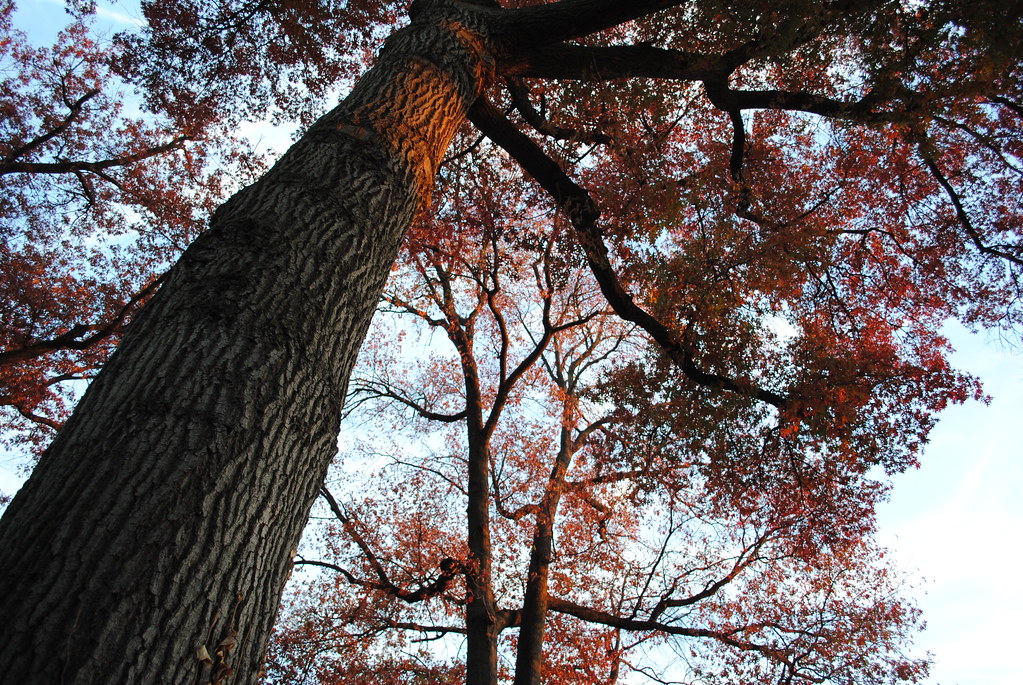The chill of last weekend may have stripped some trees of their foliage, but many will retain their leaves late into the season, including our November Tree of the Month, the scarlet oak (
Quercus coccinea). It is the official tree of the District of Columbia and has some of the most brilliant colors you will see this season. Its deep red autumn colors appear late in the fall season and give the tree its common name.
The scarlet oak is native to the Eastern United States. Its habitat stretches along most of the Appalachian Mountains, but can also be found in Southern Indiana, Southeastern Missouri and Mississippi.
The scarlet oak shares many similarities to its close cousin, the pin oak, but several key features make it easily identifiable. The scarlet oak's acorn is larger at one half to one inch long and features a deep cup that covers almost half of the nut. The scarlet oak also features ascending branches that can form an open, rounded or irregular crown that looks markedly different from the horizontal and drooping branches of the pin oak.
The scarlet oak's leaves are simple and oval shaped with deep C-shaped cuts that create up to nine bristly lobes. The leaves are a bright and shiny green on top with a paler shaded underside and are usually three to seven inches long. The leaves autumn colors range from a subtle russet to the deep scarlet coloration the tree is famous for.
Facts about the scarlet oak
- The scarlet oak prefers dry and sandy soils especially along ridges and slopes
- The tree's canopy can spread up to 50 feet in diameter
- The scarlet oak's acorns are a food source for gray squirrels, mice, deer, wild turkey and other birds
- Their taproot system can make the scarlet oak difficult to transplant
- These trees can fare droughts much better than other trees
 |
| A scarlet oak on Hobart Street in Mount Pleasant. |
The scarlet oak can be found in a variety of locations throughout the District, but some of the more famous locations include the grounds of the White House, Supreme Court, and the Capitol. They can also be found along New Hampshire Avenue NW, the Mount Pleasant neighborhood, Tudor Place in Georgetown, and Rock Creek Park. One notable example is the 2006 Champion Scarlet Oak at 3374 Minnesota Avenue SE. Be sure to search for scarlet oaks that we have planted on our interactive Casey Trees Map. Just select "Casey Trees' Plantings" and type "scarlet."



No comments:
Post a Comment